Are you planning a trip to Romania as a vegan? Here is a helpful guide to traveling as a vegan In Romania (and why you should go in Lent!).
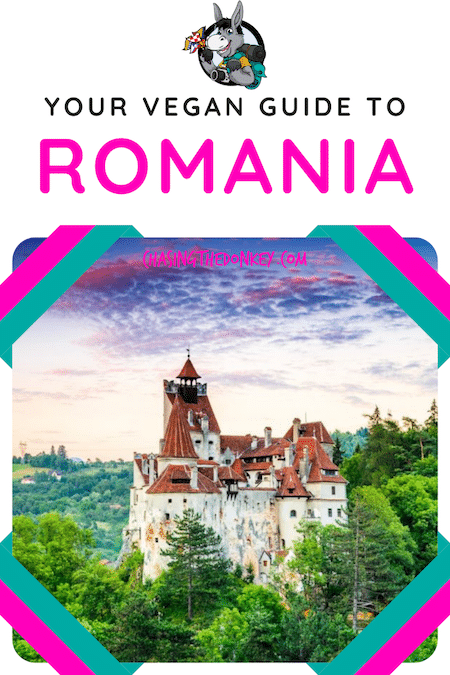
“You should visit Romania during Lent this year—it’s a vegan paradise,” my Romanian friend said casually one day.
I was confused. Romania, a vegan paradise? All I knew of Romanian cuisine was meat-stuffed cabbage rolls. And why during Lent?
She explained that traditional Orthodox believers follow a strict fasting diet that eschews meat and dairy during Lent. Thanks to their influence, she said, vegan food is featured on many menus during Lent. Restaurants that generally may not have a single vegan option release a Lenten menu featuring plant-based fare.
Despite being a vegan of nearly a decade (at that point) and an experienced vegan traveler, I had never heard of Romanian fasting traditions. Vegans who’ve been to Eastern Europe know it’s not usually the easiest place to find plant-based food, so I was excited to hear about this exception and decided to investigate.
After traveling around Transylvania for a couple of weeks, I concluded that my friend was right. It is a vegan Lenten paradise!
From a fast-food restaurant in the capital city to the only open restaurant I found in one village, I had no trouble locating vegan fare by merely requesting the Lenten menu. Plus, I enjoyed some of the best pastries I’d had in a long time by asking for Lent options at some local bakeries.
Romania is an excellent option if you’re vegetarian or vegan (or travel with one!). While other countries may have more obviously vegan-friendly cities, Romania’s cuisine is naturally vegan-friendly during Lent.
Skip Ahead To My Advice Here!
What To Eat In Romania As A Vegan
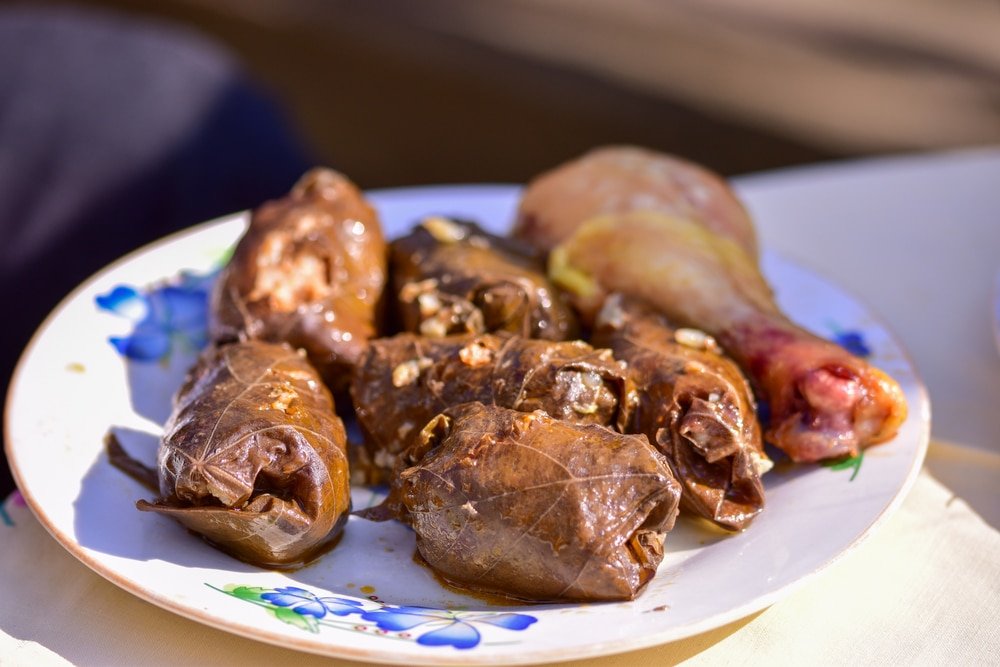
Here are a few ideas for restaurants with traditional Romanian dishes and modern dishes with an international flare that will tickle your taste buds.
Traditional Romanian Vegan Food
- Ciorba de Legume. This must-try traditional vegetable soup can be found in most restaurants. Light, healthy, and served with a lemon, this soup is an excellent change of pace from other more heavy dishes you will find in the country
- Ciuperci (Mushrooms). Boiled mushrooms are loved in Romania. They are often served in a sauce alongside other popular dips such as fasole batuta and zacusca.
- Fasole Batuta. This white bean dip, similar to hummus, is topped with caramelized onions and served alongside bread. Many restaurants will serve fasole batuta alongside zacusca (see below), which makes for a tasty and filling spread
- Mamaliga. Similar to polenta, this Romanian cornmeal porridge is another simple staple you will find all over the country
- Sarmale. These cabbage rolls are often stuffed with meat, but you can also get them stuffed with rice. Request “sarmale de post” to make sure your order comes without meat
- Varza Calita. The main ingredient of this dish is sauerkraut or pickled cabbage that has been stewed. It is often served alongside mamaliga. Be sure to ask if it was cooked in oil or butter, as either can be used
- Zacusca. This cold dip made of eggplant stewed together with tomatoes and herbs is fantastic on bread. It’s similar to Baba Ghanoush (from the Middle East) and can be pretty spicy!
Vegan Restaurants With International & Traditional Romanian Foods
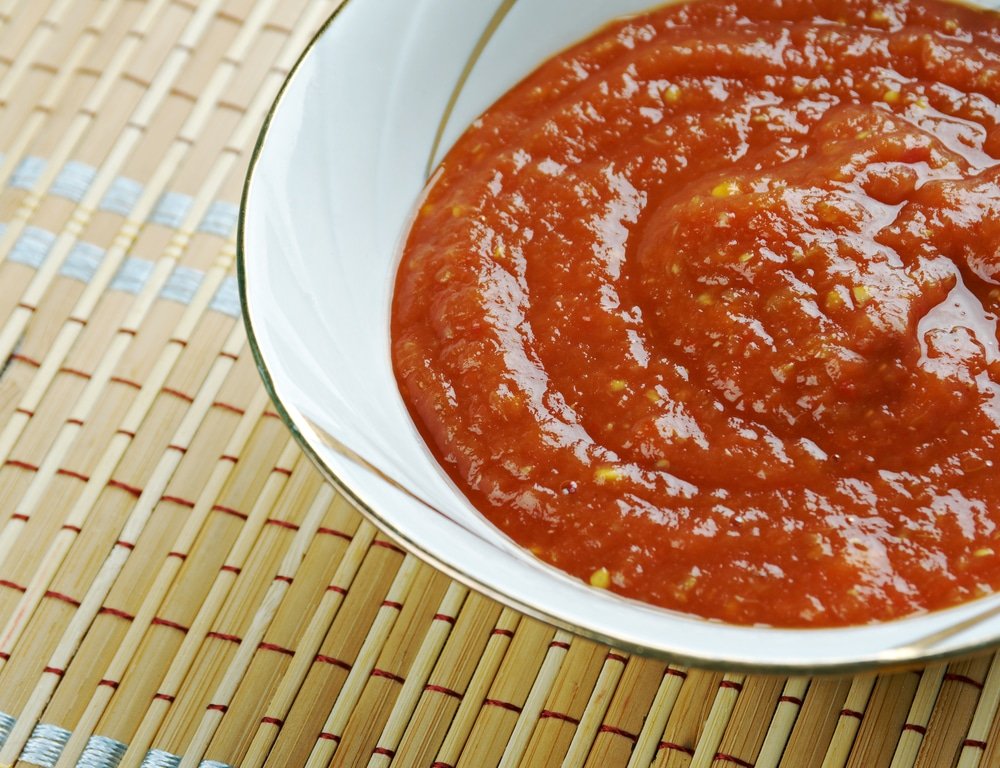
Romania offers a variety of famous vegan restaurants, especially in its capital, Bucharest, where you can find an array of options that cater to vegan dietary preferences. Here are some notable vegan restaurants in Bucharest:
- Level Up. Offers a large vegan fast food menu, including pizza with vegan mozzarella, burgers, potato chips, wings, and cheesecakes, along with a selection of local vegan cheeses and beverages
- Sublimmme. It is known for its international vegan cuisine, featuring dishes such as burgers, seitan wraps, Buddha bowls, noodle salads, soups, and over 15 types of desserts, including smoothies and kombucha
- Sara Green – Vegan Bistro. Provides organic fast food options with delivery and take-out services, being particularly famous for their second location in Victory Plaza
- Rawdia. Though primarily a raw food restaurant, it offers a menu of light, raw vegan food and sweets, smoothies, and juices. It’s important to note that while most items are vegan, they do offer some products with honey
- Vyro Raw & Vegan Bistro. It serves a wide range of vegan options, including raw meals, raw cakes, vegan pasta, and drinks, alongside custom cake orders. Some desserts may contain honey
- VanFruct Campineanu. Specializes in the type of food offering whole grain flour products, with a selection of both savory and sweet options made from fresh ingredients
- Seed Cuisine. It is another notable mention, providing a mix of international, organic, Mediterranean, and Romanian dishes, mostly vegan but with some products containing honey
- Nom Nom. It focuses on providing an exclusively plant-based menu without preservatives, artificial flavors, or sugars, emphasizing organic ingredients, and is a must try
- VegUp – IPA Business Center. It is a casual vegetarian spot with a focus on healthy food, offering smoothies, juices, and a variety of warm foods that change daily.
Additionally, visiting Lente Restaurant and Simbo in Bucharest can also offer delightful vegan options, with Lente known for its tea and coffee selection along with healthy vegan dishes heavy on vegetables, and Simbo for its vegan-friendly menu, including a delicious quinoa burger and vegan sandwich
Brands We Use And Trust
Vegan Guide To Romania At Lent
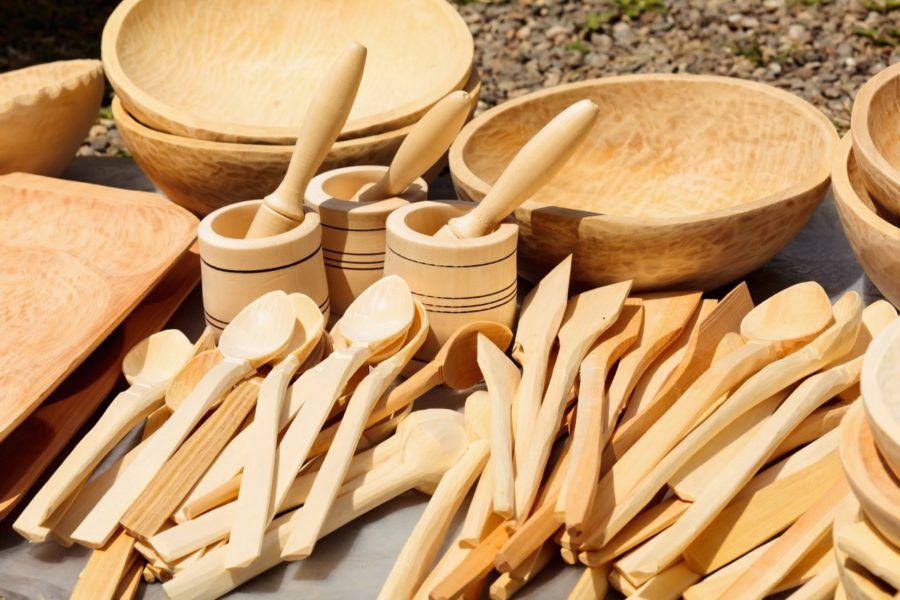
Here are a few things you should know about traveling as a vegan in Romania.
Lenten Fasting Traditions – What Is “De Post?” And Why You Need To Know The Phrase
The Romanian Orthodox Church observes fasting periods throughout the year, with the longest being during Lent, the 40 days before Easter. In this context, fasting means abstaining from meat products, dairy, and eggs. There are some local variations, and fish may be allowed on certain feast days, although I never encountered fish on a fasting menu in my travels in Romania. The only animal ingredient you need to watch out for is honey (or “miere”).
The critical vocabulary word here is “de post,” or fasting. By merely asking for the “menu de post” or “mancare de post” in any restaurant or bakery, you’ll be shown the vegan options. In bakeries, they’ll be happy to point out their vegan pastries, and in many restaurants, you’ll be handed a special, separate vegan fasting menu!
Plus, some chain restaurants in Romania introduce special fasting menus during Lent. For example, I found vegan Lenten specials on the menu at Springtime, a chain of fast-food restaurants with locations in train stations around Bucharest.
Popular Menu Items During Lent
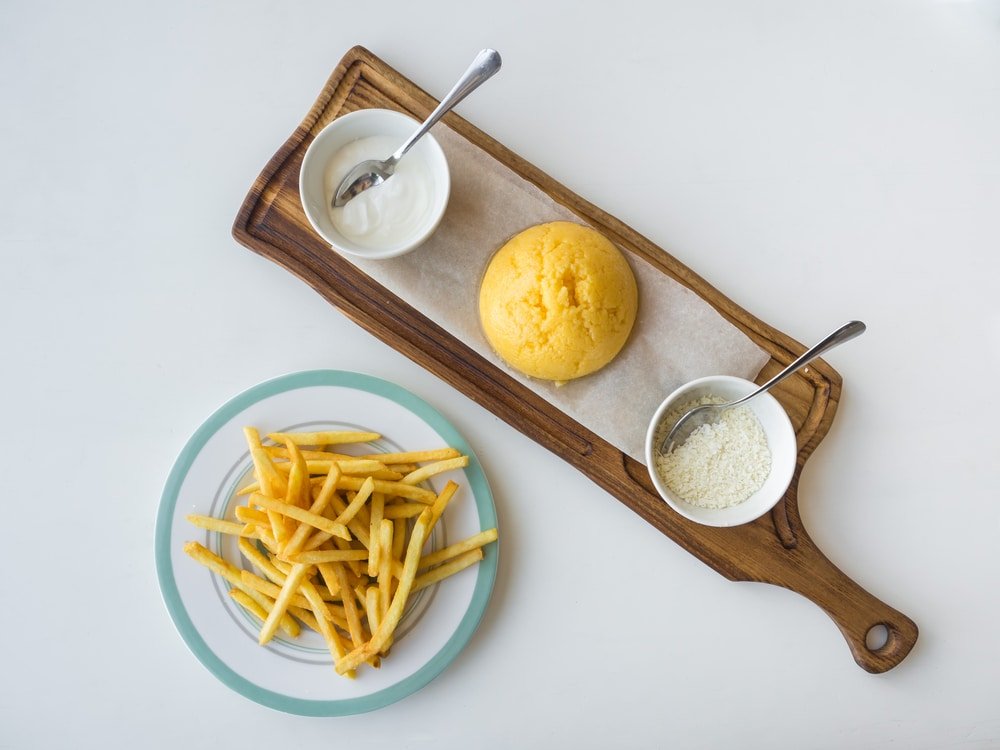
Most fasting menus feature similar dishes. Romanian cuisine has developed a repertoire of vegan dishes based on years of fasting traditions. Here are some of the vegan fasting dishes you’re most likely to encounter:
- Sarmale de post. A vegan version of the famous stuffed cabbage rolls, which are filled with rice, tomatoes, and herbs
- Mamaliga. A polenta served with fried onions and tomato
- Salata de vinete. Aubergine dip
While I heard tales of a vegan cheese that was said to be available at pizzerias across the country, I didn’t encounter said cheese and found “de post” pizza usually consisted of pizza sans cheese.
Like much of Romanian cuisine, it’s pretty hearty fare. If you prefer lighter food, there are some vegan and raw restaurants in bigger cities like Bucharest and Brasov.
On the other hand, if you enjoy sweet treats, you’ll be happy to hear many bakeries sell “de post” pastries during Lent. Instead of these sweet treats being off-limits as they usually are for vegans, during Lent, bakeries are transformed into realms of limitless possibilities.
I found “de post” versions of apple strudel, cherry pie, and more. Don’t be intimidated if a bakery doesn’t have any “de post” signs—it’s worth asking anyway, as I found some offered Lenten versions of foods without advertising them as such. Plus, bakeries are outstanding value for money, and you can get a pastry and a coffee with the change in your pocket.
When Is Lent In Romania?
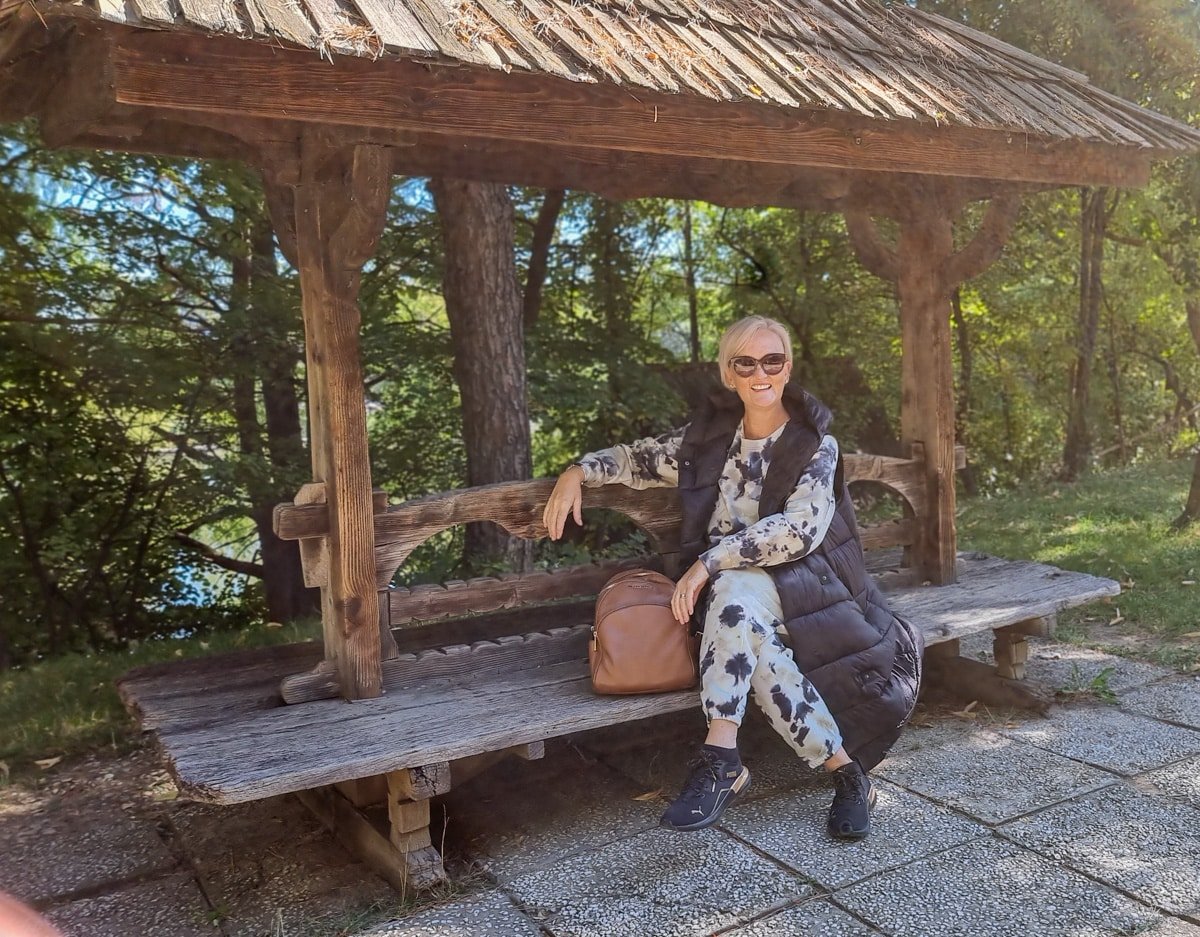
Lent is the 40 days leading up to Easter Sunday. Because Easter is at a different time each year, so is Lent. Note that Orthodox Easter is at a different time than Christian Easter, so don’t be confused, as the dates may be different from Easter in your home country if you’re from a non-Orthodox country!
This site shows the Lent dates for the next few years.
Lent usually takes place at the beginning of spring, which is a great time to travel. It’s the shoulder season, so you won’t run into too many other tourists, and accommodation prices are lower. Additionally, you can enjoy the sunshine and early spring flowers without the crowds.
Where To Visit In Romania During Lent
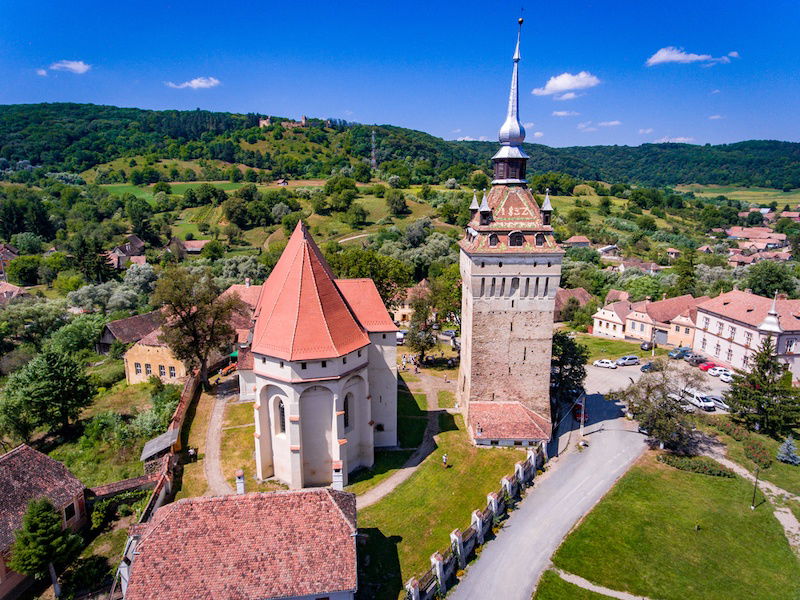
Thanks to fasting traditions, if you visit Romania during Lent, you can go anywhere in the country without worrying about how to find plant-based food. But which areas are the most popular with visitors?
Bucharest, the capital, has come a long way from its days when it was just known for its grey Communist-era tower blocks. These days, it’s also known as an up-and-coming, trendy capital city. Many visitors start their trip by flying into Bucharest. You can easily spend a few days exploring Orthodox churches and dilapidated old villas.
Several vegan restaurants are located in Bucharest, offering everything from raw food at Barca to vegan fast food at Level Up.
Transylvania is one of the most popular regions, and where I spent most of my time in Romania. From Bucharest, you take a train ride of just a few hours to Transylvania.
The journey is picturesque –past medieval churches and pine forests dotted with snow. This beautiful region has it all – mountains, walled medieval cities, and even Dracula! Cluj-Napoca is a vibrant university town, Brasov is a lovely city set in the mountains, Sibiu is known for its Germanic architecture, and Sighisoara is not to be missed.
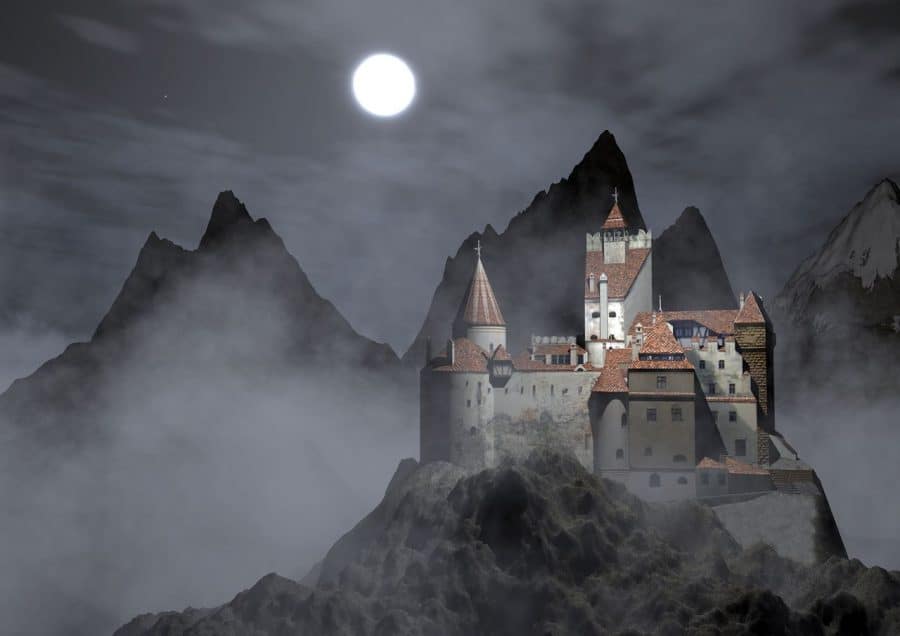
One of the best-preserved medieval walled cities, Sighisoara is a beautiful sight. And for Dracula fans, it was supposedly the birthplace of Vlad the Impaler, who inspired Dracula’s character. In Transylvania, you’ll find Bran Castle, the castle on which Dracula’s castle was based. It’s worth a visit, even for non-vampire fans, to see the historic castle. In Brasov, you’ll also find a raw vegan café, Delicious Raw. Sibiu is also home to several vegan and raw restaurants.
The Black Sea coast stretches along 250 miles if you fancy a trip to the seaside. You can go to a spa for a mud bath or treatment, head to a small village, and seek out waterfalls or an untouched beach (resorts cover less than half the coast).
The Maramures region is a lesser-known but fascinating-sounding region that was highly recommended to me by several friends. This remote region near the Ukrainian border is home to villages where life is still lived the way it was hundreds of years ago.
If you’ve ever wished you could step into a time machine and travel back to see life in a village centuries ago, this is your chance. Since it’s remote, the region isn’t the easiest to get to; your best bet is to fly into Cluj-Napoca.
Wherever you decide to go in Romania, know that you won’t have to struggle to find vegan food during Lent. And if you travel outside Lent time, it’s worth asking for “de post” menus anyway.
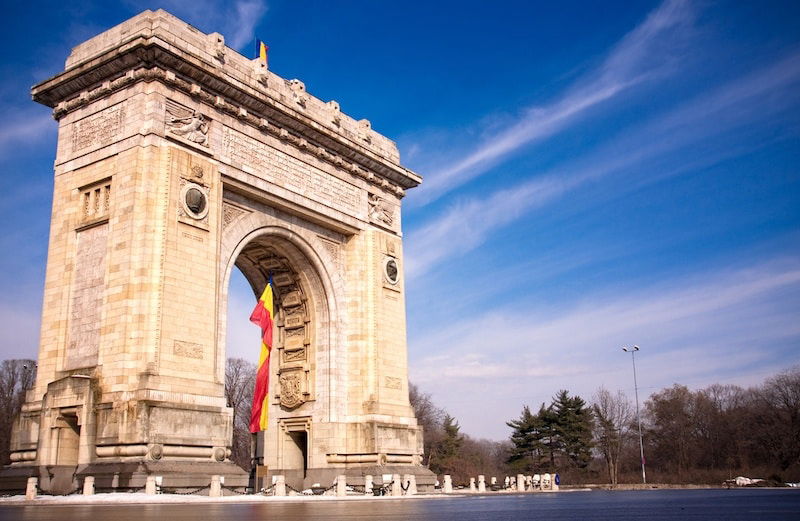
Although very devout believers only practice it, Orthodox tradition does dictate fasting throughout the year on Wednesdays, Fridays, before Christmas, and on certain religious feast days (sometimes with fish allowed, so do watch for fish on the menu).
Romania is a beautiful country waiting to be explored, and thanks to Lent fasting traditions, its fasting cuisine is waiting to be discovered by vegan travelers!
If you’re traveling around the region, you can also find vegan fasting food in some other Eastern European countries, including Serbia and Montenegro. The bakeries in these countries have extensive “posno” (Lent) pastry selections, although restaurants aren’t as fast-friendly as in Romania.
While the world is slowly becoming more vegan-friendly and more restaurants in Western Europe and the U.S. are adding vegan options to their menus, it’s a joy to travel somewhere that’s naturally vegan-friendly (during Lent), like Romania.
Although the word vegan may not be recognized in restaurants in smaller villages, merely knowing the tradition of fasting in the Orthodox church and a little vocabulary like “menu de post,” you can easily find vegan fare throughout the country.
If you’ve ever wanted to visit Romania but weren’t sure what kind of plant-based fare you’d find there, get ready to be sated by the “de post” options you’ll find in restaurants and bakeries!
Happy vegan travels in Romania!

